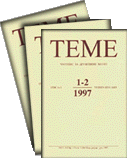
We kindly inform you that, as long as the subject affiliation of our 300.000+ articles is in progress, you might get unsufficient or no results on your third level or second level search. In this case, please broaden your search criteria.


The article looks at the Rapid Alert System for Food and Feed (RASFF) which is a system for reporting food issues and a tool for consumer protection in the European Union. The paper begins by describing the structure and functioning of RASFF. Next, the author provides a short overview of the legal framework of this system in Poland. In the final section the effects of RASFF are discussed.
More...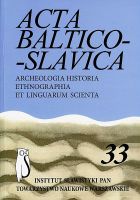
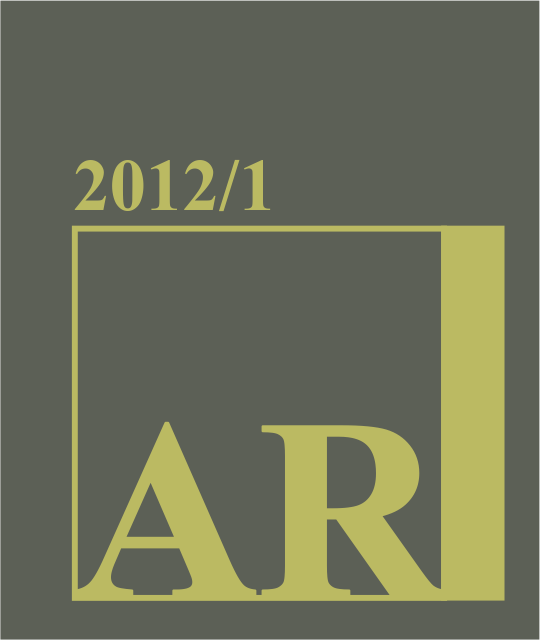
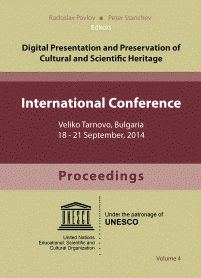
Overview of the growth of policies and a critical appraisal of the issues affecting open access, open data and open science policies. Example policies and a roadmap for open access, open research data and open science are included.
More...
Open Research Data - A step by step guide through the research data lifecycle, data set creation, big data vs long-tail, metadata, data centres/data repositories, open access for data, data sharing, data citation and publication.
More...
One of UNESCO’s overarching goals is to build inclusive knowledge societies by harnessing information and communication technologies to maintain, increase and diffuse knowledge in the fields of education, the sciences, culture, and communication and information, including through open access. Open Access (OA) is the provision of free access to peer-reviewed, scholarly, research information (both scientific papers and research data) to all. It envisages that the rights-holder grants worldwide irrevocable right of access to copy, use, distribute, transmit, and make derivative works in any format for any lawful activities with proper attribution to the original author. Through Open Access, researchers and students from around the world gain increased access to knowledge, publications have greater visibility and readership, and the potential impact of research is heightened.
More...
The lecture analyses the traditional business model in scientific communication and describes the new emerging models in the context of Open Access. Copyright and licensing part provides an overview of the legal issues and copyright at the heart of Open Access.
More...
Open Access to Publications and Research Data in Horizon 2020: What Are the Requirements and How Can Institutional Repositories and OpenAIRE Help to Meet Them? // In the last decade the principle of Open Access to publicly funded research has been getting a growing support from policy makers and funders across Europe, both at national level and within the European Union context. At European level some of the first relevant steps taken by the European Research Council (ERC) with a statement supporting Open Access (2006), shortly followed by guidelines for researchers funded by the ERC (2007) stating that all peer-reviewed publications from ERC funded projects should be made openly accessible shortly after their publication. Those guidelines were revised in October 2013, reinforcing the mandatory character of the requirements and expanding them to monographs.
More...
While openness is well applied to software development and exploitation (open sources), and successfully applied to new business models (open innovation), fundamental and applied research seems to lag behind. Even after decades of advocacy, in 2011 only 50% of the public-funded research was freely available and accessible (Archambault et al., 2013). The current research workflows, stemming from a pre-internet age, result in loss of opportunity not only for the researchers themselves (cf. extensive literature on topic at Open Access citation project, http://opcit.eprints.org/), but also slows down innovation and application of research results (Houghton & Swan, 2011). Recent studies continue to suggest that lack of awareness among researchers, rather than lack of e-infrastructure and methodology, is a key reason for this loss of opportunity (Graziotin 2014). The session will focus on why Open Science is ideally suited to achieving tenure-relevant researcher impact in a “Publish or Perish” reality. Open Science encapsulates tools and approaches for each step along the research cycle: from Open Notebook Science to Open Data, Open Access, all setting up researchers for capitalising on social media in order to promote and discuss, and establish unexpected collaborations. Incorporating these new approaches into a updated personal research workflow is of strategic beneficial for young researchers, and will prepare them for expected long term funder trends towards greater openness and demand for greater return on investment (ROI) for public funds.
More...
During the last year the main activities in Bulgaria connected with the open access to scientific information and data are: 1. Maintain the National Open Access Desks which connect researchers, research institutions, and policy makers at a national level on the one end, and the OpenAIRE project services on the other. The focus of the National Open Access Desks activities is on support for compliance with the EC Open Access policies. 2. Maintain the Bulgarian repositories for open access 3. Organizing the fourth National Information Day “Open Access to Scientific Information”, Veliko Tarnovo, 18 September, 2013 4. Organizing events in Bulgaria connected with the open access week, October 21-25, 2013 5. Organizing the first International Conference BiblioWorld: Technologies, Resources, Practices, 26-27. September 2013, Sofia. 6. The 460th Organization acceded to Berlin Declaration on Open Access to Knowledge in the Sciences and Humanities is the Bulgarian Academy of Sciences (http://openaccess.mpg.de/3883/Signatories). It was done during the 10th anniversary of the declaration from the academician Stefan Vodenitcharov, the President of the Bulgarian Academy of Sciences at the Berlin-Brandenburg Academy of Science and Humanities. 7. A Commission for developing a vision and action plan for the implementation of the principle of open access to scientific information consists of: Dr. Mariela Deliverska, Director of the Science Directorate – chair and Prof. Alexei Alexeev, representative of the Council of Rectors, Prof. Ivan Dimov, representative of the Head Office of the Bulgarian Academy of Sciences (BAS), Prof. Peter Stanchev, Project Coordinator of OpenAIRE, Institute of Mathematics and Informatics—BAS, Prof. Radoslav Pavlov, Project Coordinator of EuDML, Institute of Mathematics and Informatics —BAS, Prof. Rumen Nikolov, Project Coordinator of ATLAS and OpenScout, UniBIT, Vanya Grashkina, Executive Director of the National Centre for Information and Documentation, Rumyana Dimitrova, Expert in the Academy of Agriculture, Bistra Lipovska, Head of Unit at the Science Directorate, Genoveva Zhecheva, Head of Unit at the Science Directorate, Yanita Zherkova, State Expert at the Science Directorate was created. The Commission reviews the state of scientific information in Bulgaria. The Commission develops a vision and action plan for the implementation of the principle of open access to research results and data obtained within projects financed by public funds.
More...
Overview of the key aspects and approaches to open access, open data and open science, emphasizing on sharing scientific knowledge for sustainable progress and development.
More...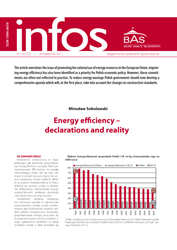
The article overviews the issue of promoting the rational use of energy resources in the European Union. Improving energy efficiency has also been identified as a priority for Polish economic policy. However, these commitments are often not reflected in practice. To reduce energy wastage Polish government should now develop a comprehensive agenda which will, in the first place, take into account the changes in construction standards.
More...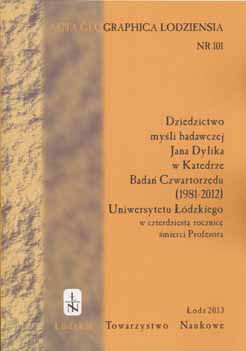
The paper presents the geochemical description of selected peatlands of the Łódź region: Ługi, Podwódka and Rąbień. The aim of this study is evaluation of the type and intensity of the Late Wechselian processes in the peatland catch-ment. The thickness of the document biogenic sediments in the profiles analyzed was: 2,66 m (core R-3), 3,0 m (core Ł-1) and 4,75 m (core P-1). The objective of the geochemical analyses of the above peatlands was identification of basic compo-nents of biogenic sediments, i.e. organic matter, calcium carbonate, terigenic and biogenic silica. In the resulting solution, elements helpful in palaeogeographical reconstruction were identified by the method of atomic absorption spectroscopy: Na, K, Ca, Mg and Zn. The analysis of types of denudation in the catchment following geochemical indices reflecting the most important changes in contribution of marked elements.
More...
The occurrence of periglacial processes in the past is possible to reconstruct on the base of evidences such as thermal contraction structures or stone pavement. Textural properties of deposits can also deliver important information. Investigations was carried in Rosanów site, located on the Katarzynów level – one of the levels of the edge-zone of the Łódź Plateau. In the study area sand till as host sediment of deformational structures occur. Some of the structures has typical features of the sand-wedge casts, the other were interpreted as clastic dikes. Textural analysis of the host sediments and de-posits, which fill thermal contraction structures allow to evaluate impact of periglacial environment on deposits. Thermoluminescence dating of host deposits, infilling of sand wedges and covering aeolian sand gives very similar results, so the age of structures was establish by the indirect indicators.
More...
Considerations are related to the conception of Professor Jan Dylik, presented in the article Rozwój myśli badawczej w łódzkim ośrodku geomorfologicznym (in Polish with French summary) from 1958, the reprint of which begins this volume. Four problems were selected (dynamic geomorphology, cover deposits as the evidence of periglacial morphogeny, geological mapping and application of geological maps to palaeogeographical interpretations, geomorphologi-cal mapping and geomorphic maps at various scales) for which the evidence of the negation of or the continuation of the J. Dylik’s idea was considered. It has been shown that the leading issues of the Łódź geomorphological school were in the research profile of the Department of Quaternary Research only one of the tasks. Formulated in 1958 a research program was continued at the level of general principles, understood as the study of the polygenesis of central Poland relief. Research methods are still in use and refer to a dynamic geomorphology, but now it denotes the use of an wider and modern range of interdisciplinary methods. Expressed is opinion that the development of knowledge on the changing and diverse environment spatially morphogenetic environment, which is the heritage Professor Jan Dylik idea, is proportional to time.
More...
This article gives environmental background of settlement within the last ca 3000 years in Rawka valley, central Poland. Archeological, investigations were initiated before an expressway and ring road for the town Rawa Mazowiecka construction. Samples of organic sediments were taken from the archeological profile and used for pollen analysis. Palinological diagram shows vegetation development and revealed three phases of human impact.
More...
La chaire de la Géographie Physique de l’Université qui existe depuis 1945 est la base du centre géomorphologique de Łódź. Le développement de l’idée investigatrice dans ce centre s’effectuait sous l’influence des conditions locales du travail, des générales dispositions centrales des recherches et du contact avec le monde scientifique étranger. La tendance, nouvellement apparue, de la coopération de la science avec la vie pratique a joué un rôle important dans ce mouvement. Dans la première période, préparatoire, qui a duré pràes de trois ans, ont a obtenu dans les recherches des résultats plutôt négatifs – exception faite des travaux d’organisation qui exigeaient alors le plus d’énergie. C’est alors que les anciennes méthods descriptives apparurent comme peu süres et décevantes. La découverte des structures périglaciaires dans le Pléistocène des environs de Łódź a ouvert une nouvelle période en ce qui concerne les obtentions positives et a mené a la réalisation du courant de la géomorphologie climatique. C’était en même temps le commencement des recherches dynamiques qui se sont développées plus tard poussées par les problèmes résultant de la nécessité de donner le tableau géomorphologique de la Pologne et les besoins de la vie économique. Le développement de la géomorphologie génerale allés de pair avec le levé géomorphologique ce qui a éte considéré comme une condition indispensable pour le juste établissement de la carte. Les expériences qu’on a faites en tentant de réaliser le principe de la coopération de la théorie avec la pratique, ont prouvé que la géomorphologie était quelque peu arriérée. Elles ont montre que la théorie n’arrivait pas en ce moment a suivre les besoins de la vie pratique. Le développement du courant dynamique est une condition du progrès de la géomorphologie et de la véritable réalisation du postulat de la coopération entre la théorie et la pratique.
More...
The article presents the palaeogeographical recognition of the Late Vistulian in the Łódź Region. For three sedi-mentary environments – fluvial, slope and aeolian – tendencies of aggradation and degradation have been identified and preserved geological and morphological evidences have been characterized. Morphogenetic processes have been related to global climatic changes of the Pleistocene-Holocene transition and varying local conditions. Attention was drawn to non-uniformity in the application of the term “Late Vistulian”, depending on the stratigraphical division, or to glacial or extragla-cial areas. The progress that has been made in the registration of the Late Vistulian processes is emphasized. In view of the increasing data of interdisciplinary research, the construction of a regional model for the environmental development is pos-sible in the nearest future.
More...